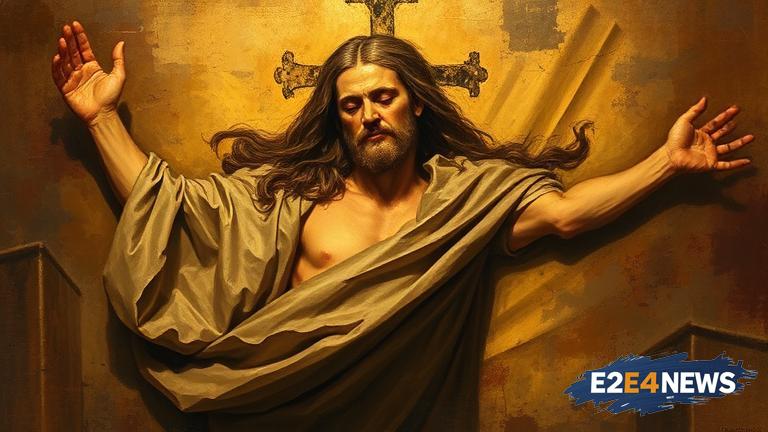The Shroud of Turin, a linen cloth measuring 14 feet 3 inches long by 3 feet 7 inches wide, has been the subject of intense scrutiny and debate for centuries. The shroud bears the image of a crucified man, which many believe to be Jesus Christ. However, the shroud’s authenticity has been questioned by many experts, with some arguing that it is a medieval forgery. The latest research, conducted by a team of scientists, has added fuel to the fire, suggesting that the shroud may not be as old as previously thought. The researchers used a technique called radiocarbon dating to determine the age of the shroud, and their findings indicate that it dates back to the Middle Ages, rather than the time of Christ. This has led many to question the shroud’s legitimacy, with some arguing that it is a clever hoax. The shroud has been the subject of numerous scientific studies over the years, with many attempting to verify its authenticity. In 1988, a team of scientists conducted a radiocarbon dating test on the shroud, which suggested that it dated back to the 14th century. However, many experts have disputed these findings, arguing that the test was flawed. The latest research has used more advanced techniques to date the shroud, and the results have sparked a fresh wave of controversy. The shroud is currently housed in the Cathedral of Saint John the Baptist in Turin, Italy, where it is viewed by millions of people each year. Despite the controversy surrounding its authenticity, the shroud remains a deeply revered and sacred object for many Christians. The Catholic Church has never officially endorsed the shroud as a genuine relic, but it has also never denied its authenticity. The debate over the shroud’s legitimacy is likely to continue, with many experts on both sides of the argument. The shroud’s image is that of a man who has been crucified, with wounds consistent with those described in the New Testament. Many believe that the shroud is a miraculous relic, one that provides tangible evidence of Christ’s existence and crucifixion. Others, however, argue that the shroud is a clever forgery, one that was created to deceive and manipulate. The shroud’s history is shrouded in mystery, with many gaps in its provenance. It is known to have been in the possession of the House of Savoy in the 14th century, but its origins before that are unclear. The shroud has been the subject of numerous books, articles, and documentaries, with many attempting to unravel its secrets. Despite the controversy surrounding its authenticity, the shroud remains a deeply fascinating and intriguing object, one that continues to capture the imagination of people around the world. The latest research has added a new layer of complexity to the debate, one that is likely to continue for many years to come. As the debate rages on, one thing is clear: the Shroud of Turin remains a deeply sacred and revered object, one that continues to inspire and fascinate people of all faiths. The shroud’s authenticity may be in question, but its significance and importance are undeniable. The shroud has been the subject of numerous scientific studies, with many attempting to verify its authenticity. The latest research has used more advanced techniques to date the shroud, and the results have sparked a fresh wave of controversy. The shroud’s image is that of a man who has been crucified, with wounds consistent with those described in the New Testament. Many believe that the shroud is a miraculous relic, one that provides tangible evidence of Christ’s existence and crucifixion. The shroud’s history is shrouded in mystery, with many gaps in its provenance. The shroud has been the subject of numerous books, articles, and documentaries, with many attempting to unravel its secrets. The debate over the shroud’s legitimacy is likely to continue, with many experts on both sides of the argument. The shroud remains a deeply fascinating and intriguing object, one that continues to capture the imagination of people around the world.
